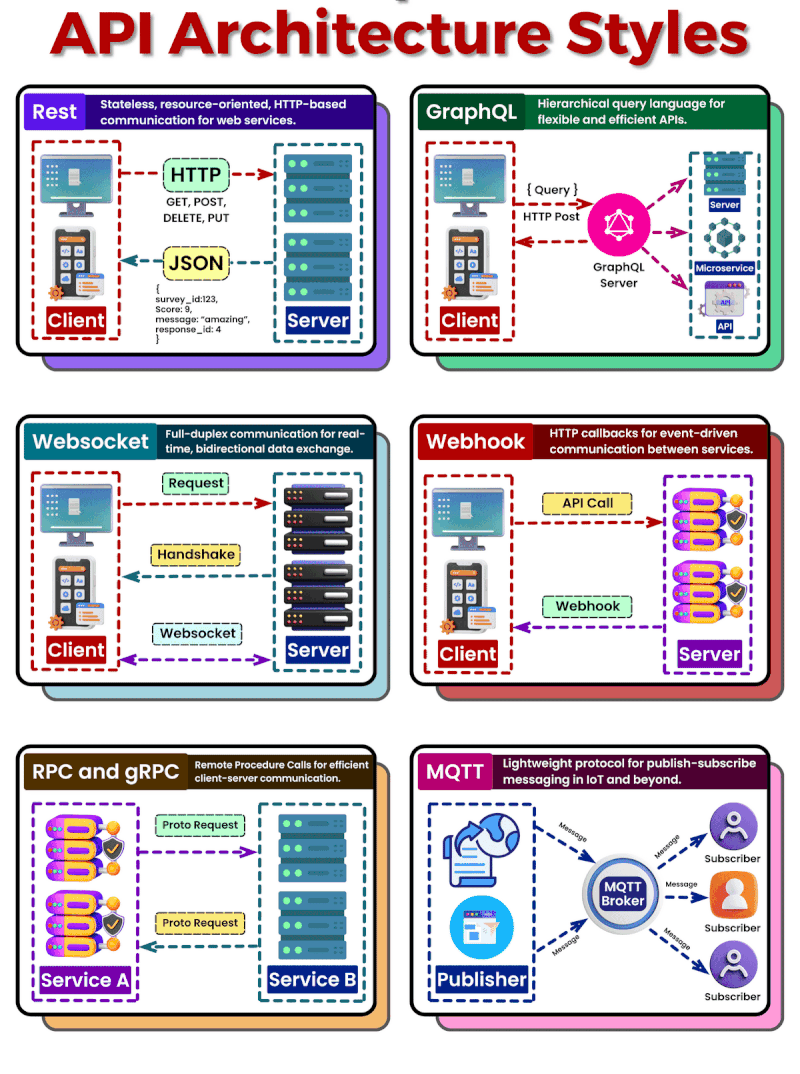Understanding the top 6 API architecture styles for modern development

Understanding the Top 6 API Architecture Styles for Modern Development
Application Programming Interfaces (APIs) have become the backbone of modern software development, enabling applications to communicate with each other seamlessly. As the digital landscape evolves, it’s crucial to understand the various API architecture styles that cater to different needs and scenarios. Let’s delve into the top six API architectures that are shaping the future of development.
REST: The Foundation of Web Services
Representational State Transfer (REST) is a stateless, resource-oriented architectural style that leverages HTTP protocols for communication. RESTful APIs use standard HTTP methods like GET, POST, DELETE, and PUT, and they often exchange data in JSON format. This architecture is renowned for its simplicity and scalability, making it a popular choice for web services.
Key Features:
- Stateless operations ensure reliability and independence between calls.
- Resource-oriented approach provides a straightforward structure.
- Uses familiar HTTP methods, enhancing developer productivity.
GraphQL: A Query Language Revolution
GraphQL offers a hierarchical query language that introduces flexibility and efficiency to APIs. Unlike REST, which requires multiple endpoints, GraphQL APIs utilize a single endpoint with queries tailored to retrieve specific data. This minimizes data over-fetching and under-fetching issues, offering a more optimized data retrieval process.
Key Benefits:
- Clients have control over the data they receive, reducing bandwidth usage.
- It simplifies the workflow for developers working with complex systems.
WebSockets: Real-Time Bidirectional Communication
WebSockets enable full-duplex communication channels over a single, long-held connection. This is ideal for real-time applications such as chat systems or live sports updates, where a persistent connection between the client and server is essential for instant data exchange.
Advantages:
- Real-time data transfer without the need for polling.
- More efficient than traditional HTTP connections for certain tasks.
Webhooks: Event-Driven Communication
Webhooks are user-defined HTTP callbacks that are triggered by specific events. When an event occurs in the source site, the webhook sends an HTTP request to the URL configured by the user. This is particularly useful for integrating third-party services and for building event-driven architectures.
Use Cases:
- Automating tasks between different services.
- Sending real-time notifications.
RPC and gRPC: Efficient Procedure Calls
Remote Procedure Calls (RPC) and Google’s gRPC are protocols designed for fast, point-to-point communication. gRPC uses Protocol Buffers as its interface description language, which allows for efficient serialization. This style is well-suited for microservices architectures where different services need to communicate with low latency.
Highlighting Features:
- Supports streaming requests and responses.
- Language agnostic with support for multiple programming languages.
MQTT: Messaging for IoT and Beyond
MQTT (Message Queuing Telemetry Transport) is a lightweight messaging protocol designed for low-bandwidth, high-latency or unreliable networks. It follows the publish-subscribe model, making it suitable for IoT applications where devices need to send data to a server or communicate among themselves.
Characteristics:
- Ideal for constrained environments like IoT devices.
- Supports asynchronous communication, which is vital for distributed systems.
In conclusion, choosing the right API architecture style is vital for building efficient, scalable, and maintainable applications. Each of these six styles has its own set of benefits and use cases, and the best choice depends on the specific requirements of your project. As developers continue to build more interconnected services, understanding these API styles becomes increasingly important.
